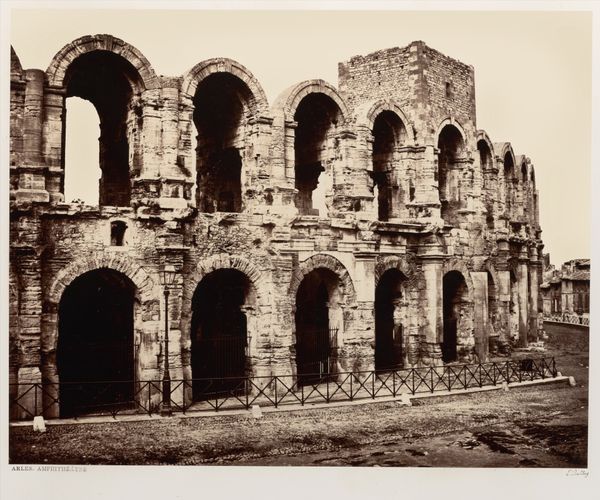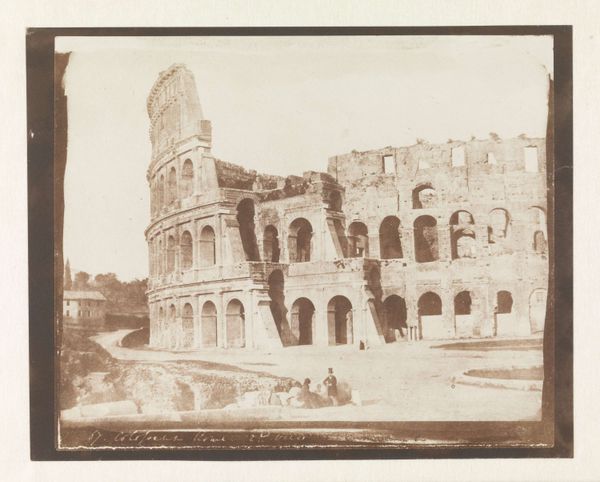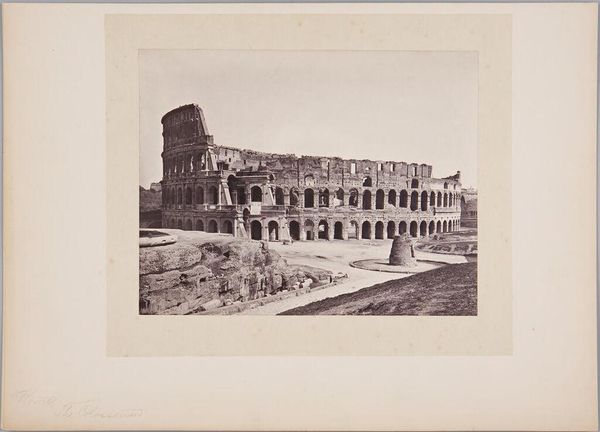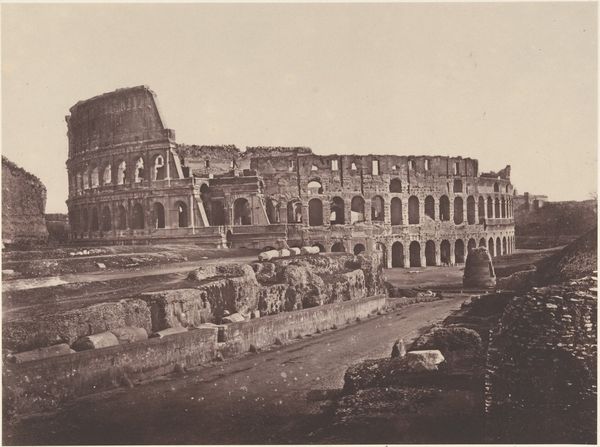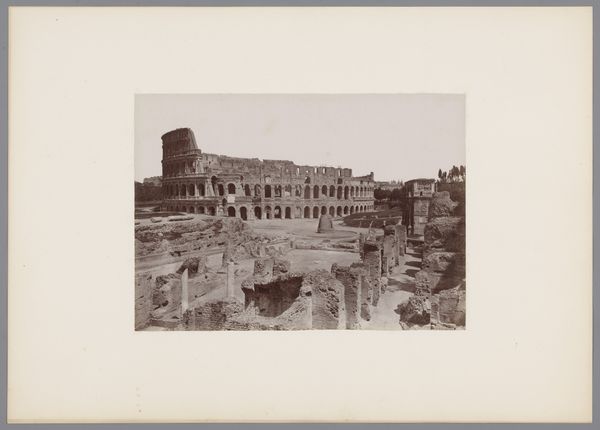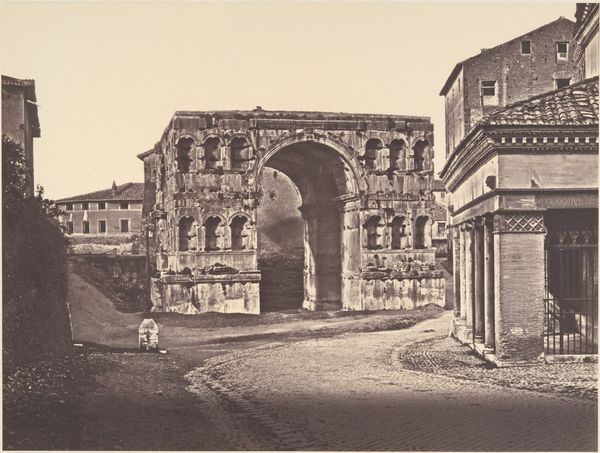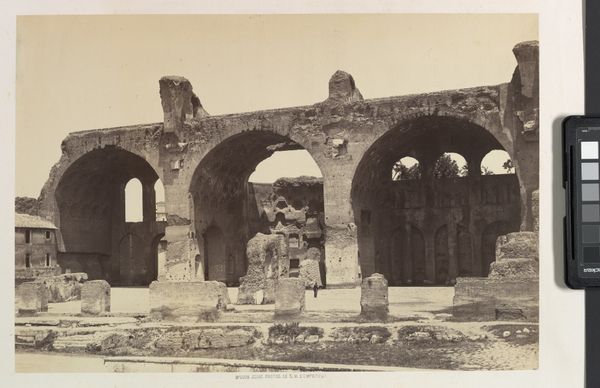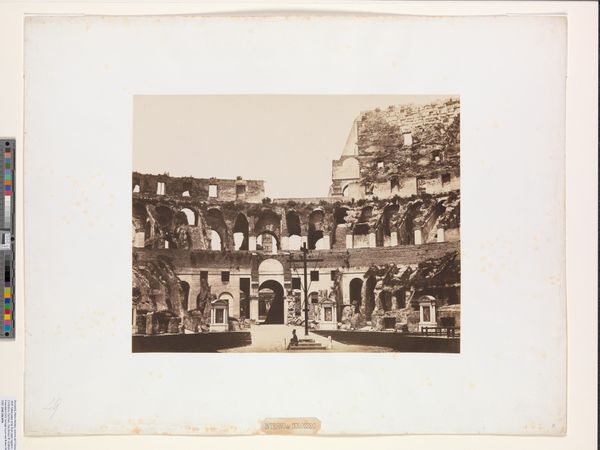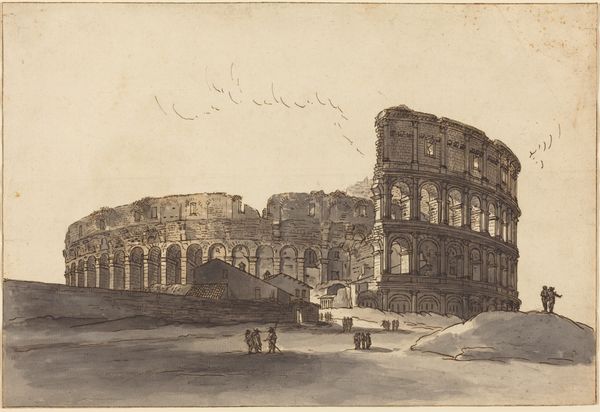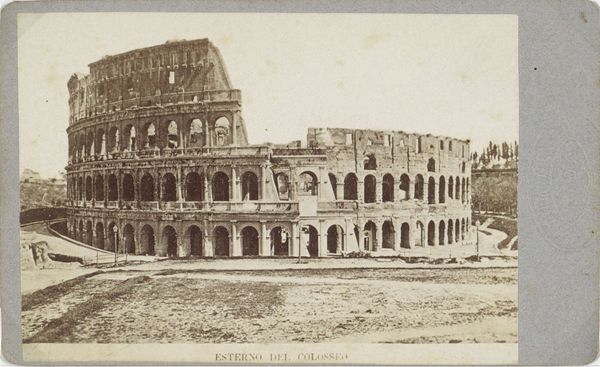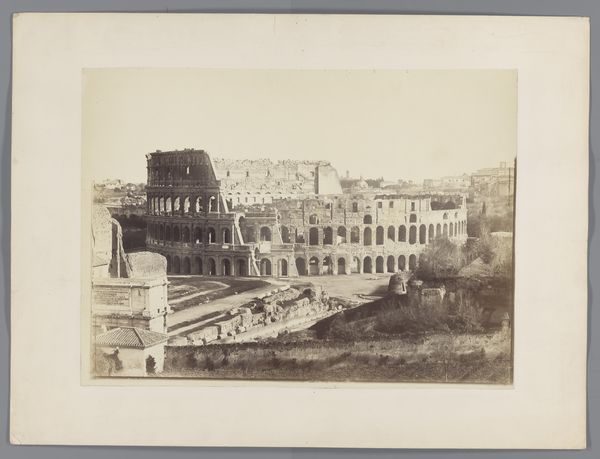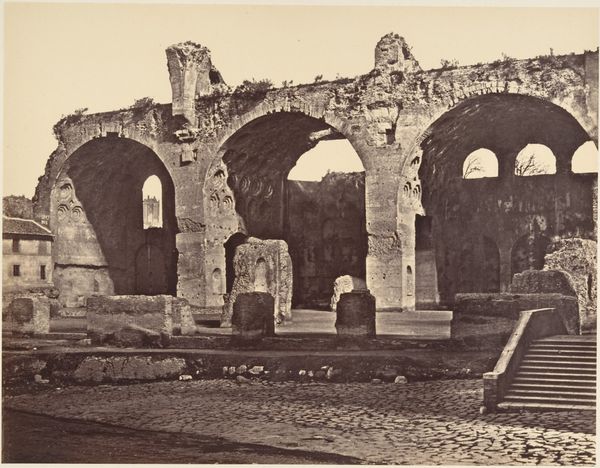
silver, print, photography
#
16_19th-century
#
silver
# print
#
photography
#
romanesque
#
ancient-mediterranean
#
cityscape
Dimensions: 30.2 × 41.1 cm (image/paper); 49 × 64 cm (mount)
Copyright: Public Domain
Editor: So, this photograph is titled "Coliseum," taken around 1867 by Robert MacPherson. It’s a silver print, and there’s something about the play of light and shadow that really draws me in. It almost feels like a stage set. What do you see when you look at it? Curator: Immediately, I observe the photographer’s careful manipulation of tonal values. The stark contrast between light and dark emphasizes the Coliseum’s architectural structure and decaying texture. Note the strong verticals, the framing of arches—the way the eye is led into the depths of the image by those repeated shapes. Editor: It’s interesting that you focus on the architecture. Did MacPherson intend to showcase it, or something else? Curator: One must analyze the composition itself. The artist, by deliberately choosing a frontal viewpoint, allows the monument to convey a sense of balance. And how the light sculpts form, almost breathing new life into the ruins. Consider, too, how he organized the buildings and the interior; the tonal gradations that give the photograph space and scale. Editor: I see what you mean about the formal elements working together. The geometric quality also helps to create perspective. The textures do emphasize a monumental ruin. But, doesn't that neglect a deeper reading? Curator: Does form not give rise to meaning? What could this photograph tell us about the medium itself? Editor: So, looking closely at how MacPherson captured and arranged everything provides the deeper meaning. I appreciate your viewpoint! Curator: Precisely. Every technical element works in concert, culminating in the viewer's aesthetic understanding of MacPherson's "Coliseum."
Comments
No comments
Be the first to comment and join the conversation on the ultimate creative platform.
